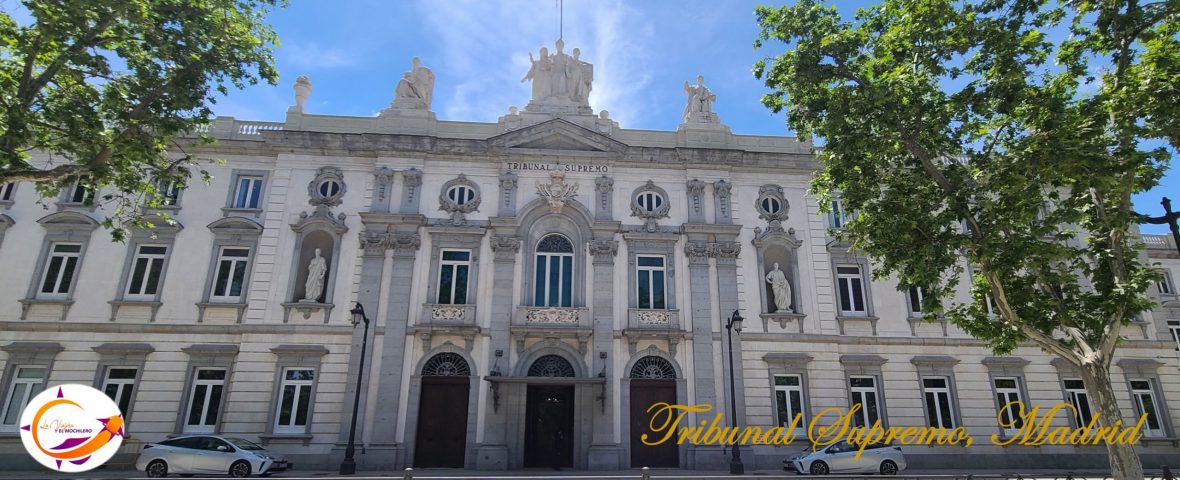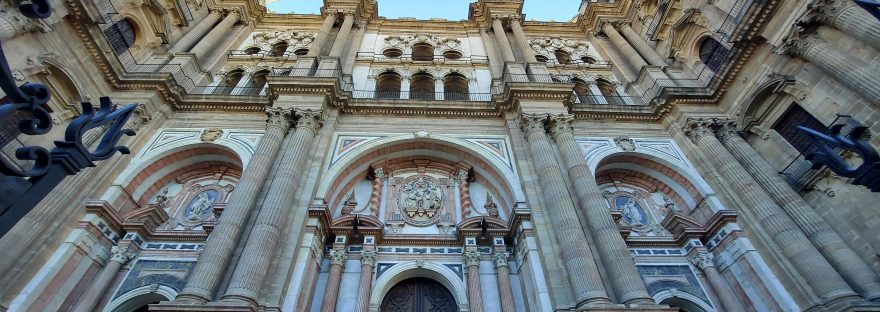Facing the Bishop’s Square in Malaga, stands the Holy Church Cathedral Basilica of the Incarnation, a temple considered as one of the most valuable Renaissance jewels of Andalusia, Spain. The history of the Cathedral is closely related to the Great Mosque on which it was built, located inside the Arab walled enclosure. Its origin dates back to 1487, the year in which the city of Malaga was re-conquered by the Castilian troops. It was then when the Aljama Mosque was converted into a Christian Cathedral.

Until 2012, it was the second tallest building in Andalusia, only surpassed in its tower by the Giralda of Seville. The height of its vaults in Spain is only surpassed by the Cathedral of Palma de Mallorca, being the cathedral of Malaga, one of the fifteen European temples with greater height in its naves. The Cathedral was consecrated on August 3, 1588. It was in 1855, that Pope Pius IX declared the cathedral of Malaga as a minor Basilica.
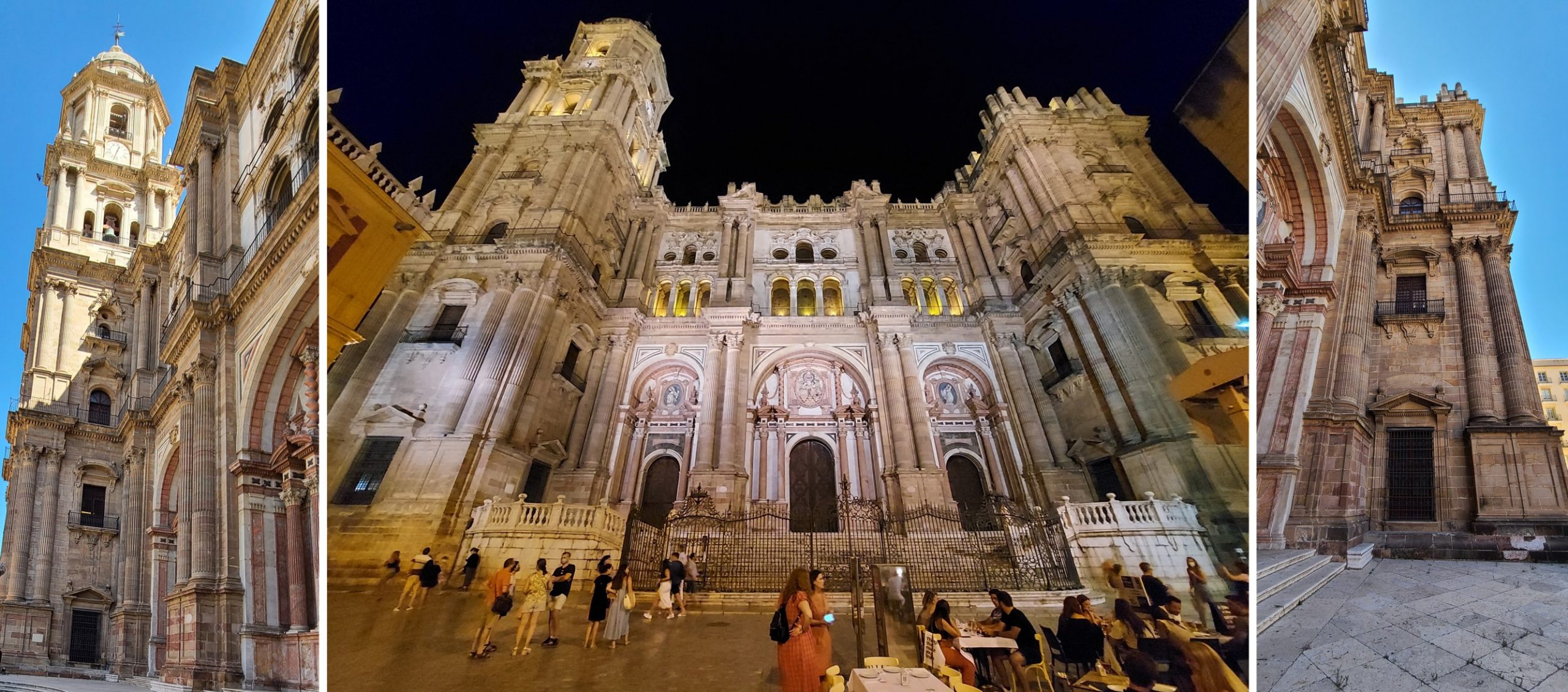
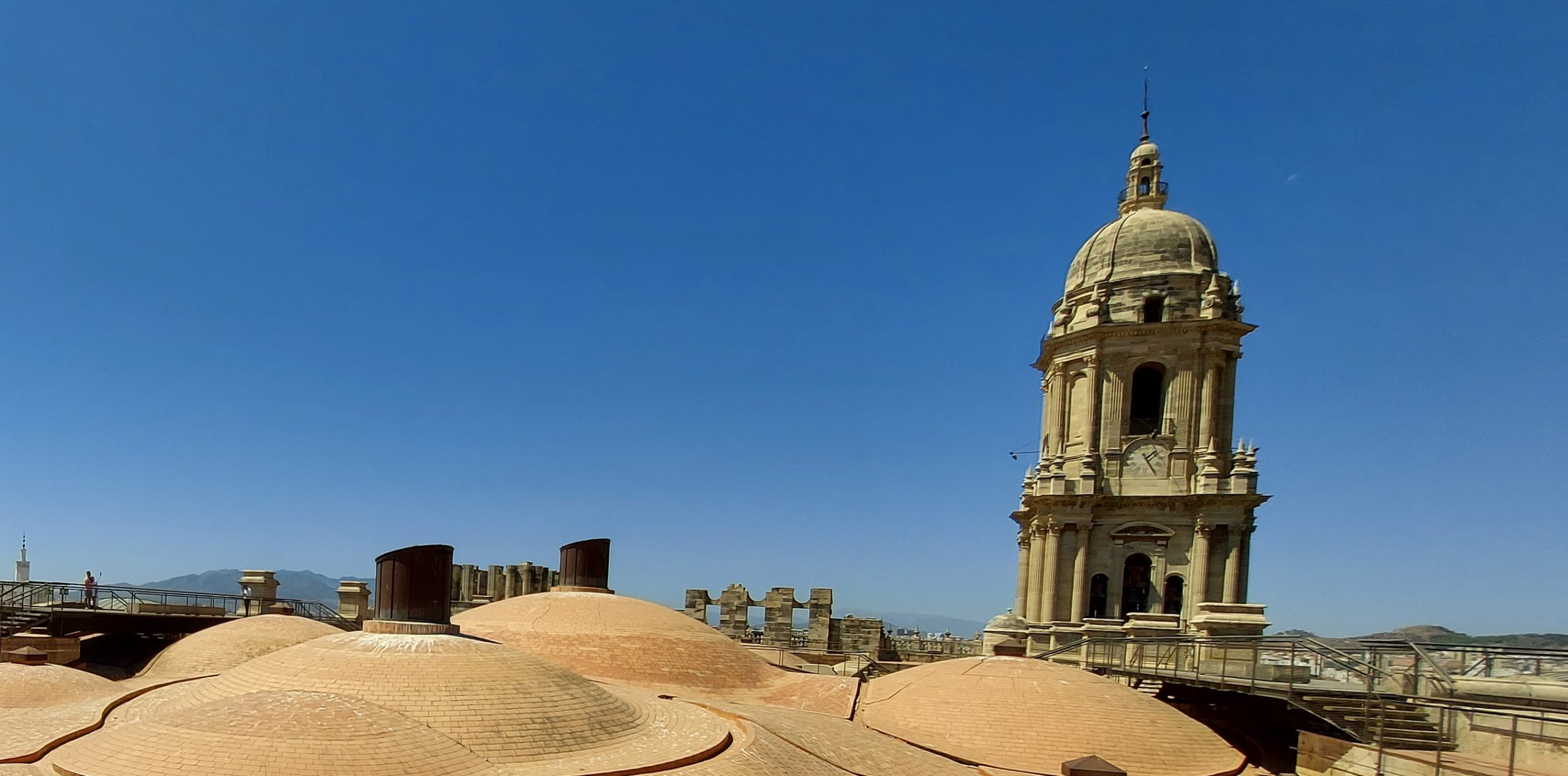
Its construction began in the first half of the XVI century and continued throughout the XVII and XVIII centuries, the Cathedral of Malaga is considered as an unfinished work. The roof, the main sacristy, the central belfry and the sculptural ornamentation, among other elements, were still to be built. In addition, the south tower was left unbuilt, which gave the temple the appearance that can be seen today and is the origin of its popular name among the people of Malaga, “La Manquita”.
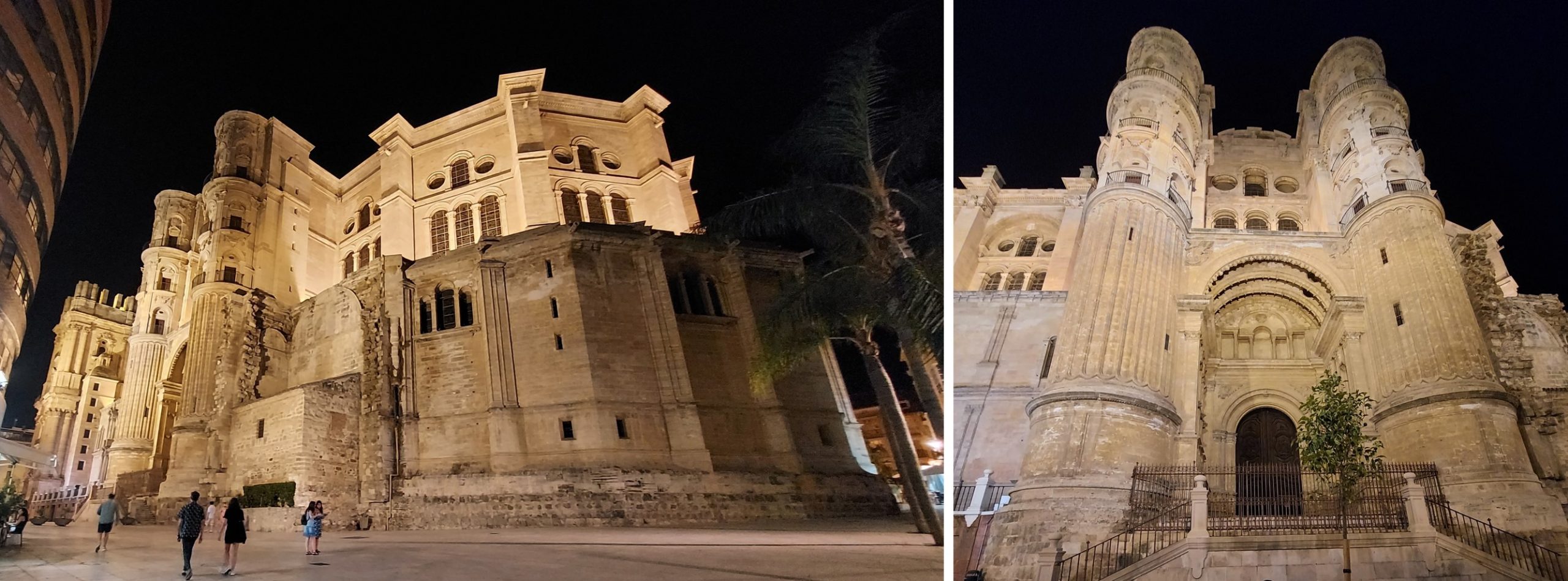
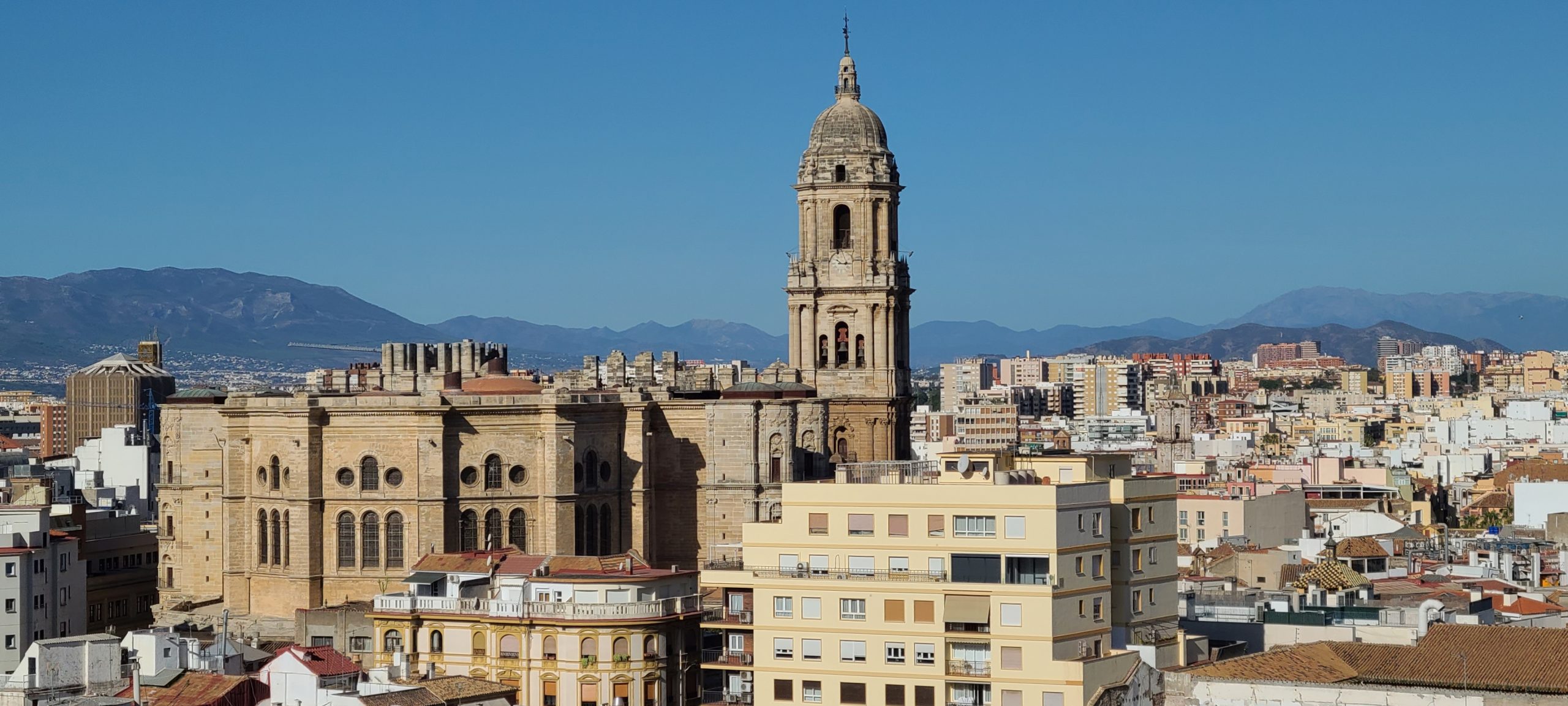
The Cathedral of Malaga is a synthesis of architectural styles among which the Renaissance prevails over the early Gothic of the old construction and the Baroque elements added since the beginning of the 18th century. It is precisely at the beginning of the 18th century that the completion of the Cathedral, whose works had been interrupted almost a century before, was resumed. By means of a tax on ships arriving at the port of Malaga, it was possible to cover the great expenses of the work. Even today, the processes on the completion of the Cathedral of Malaga continue. The objective is to have it finished for the celebration of the fifth centenary of its construction after more than two centuries with the works paralyzed, which would turn it into a jewel of the Spanish Renaissance. Some propose this celebration for 2028.
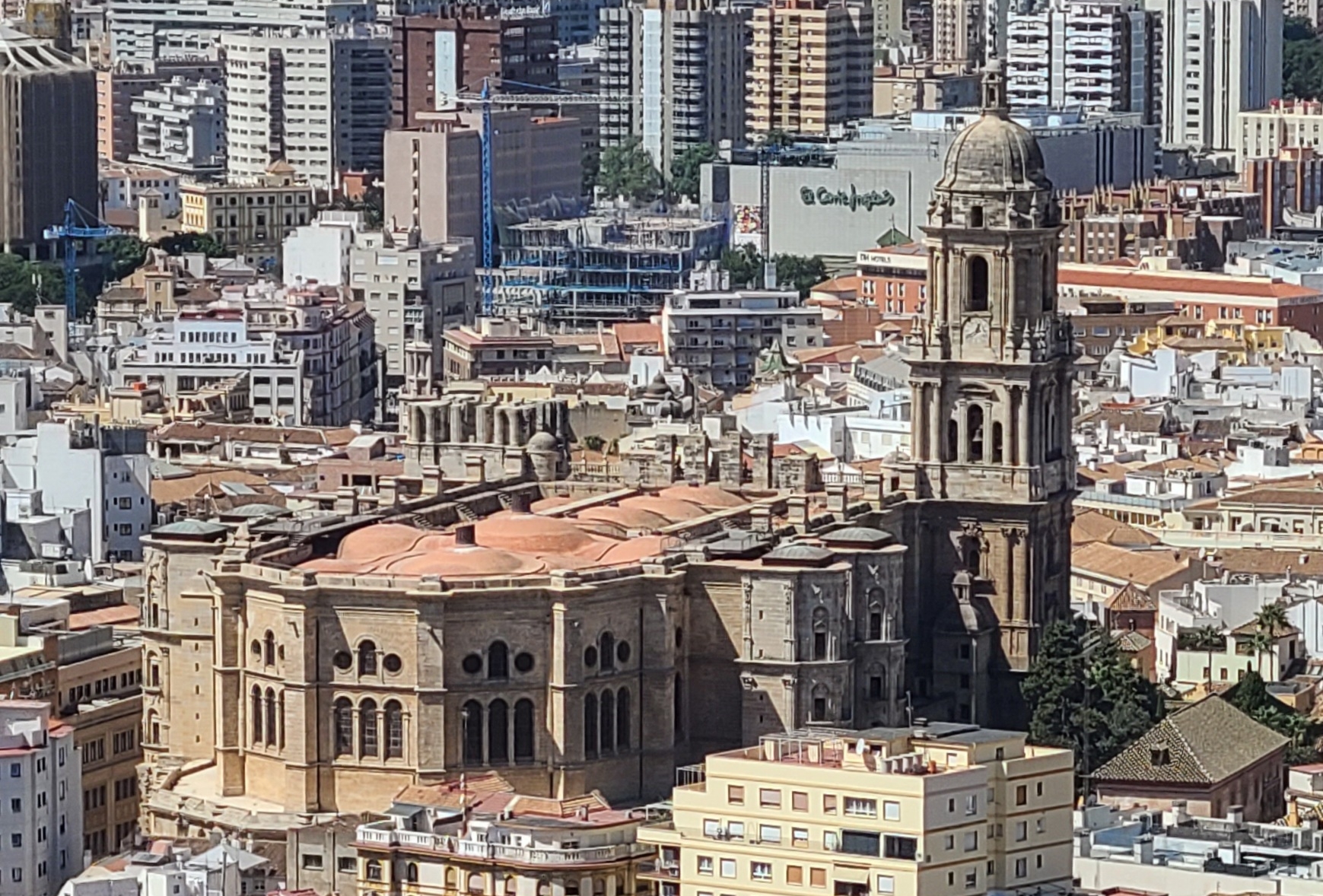
The façades of the cathedral are known as that of the Chains, in front of the Palace of Zea-Salvatierra with its gardens and orange tree courtyard; the main one, known as that of the Plaza del Obispo and, although it is not integrated in the Cathedral, the façade of the Sagrario.
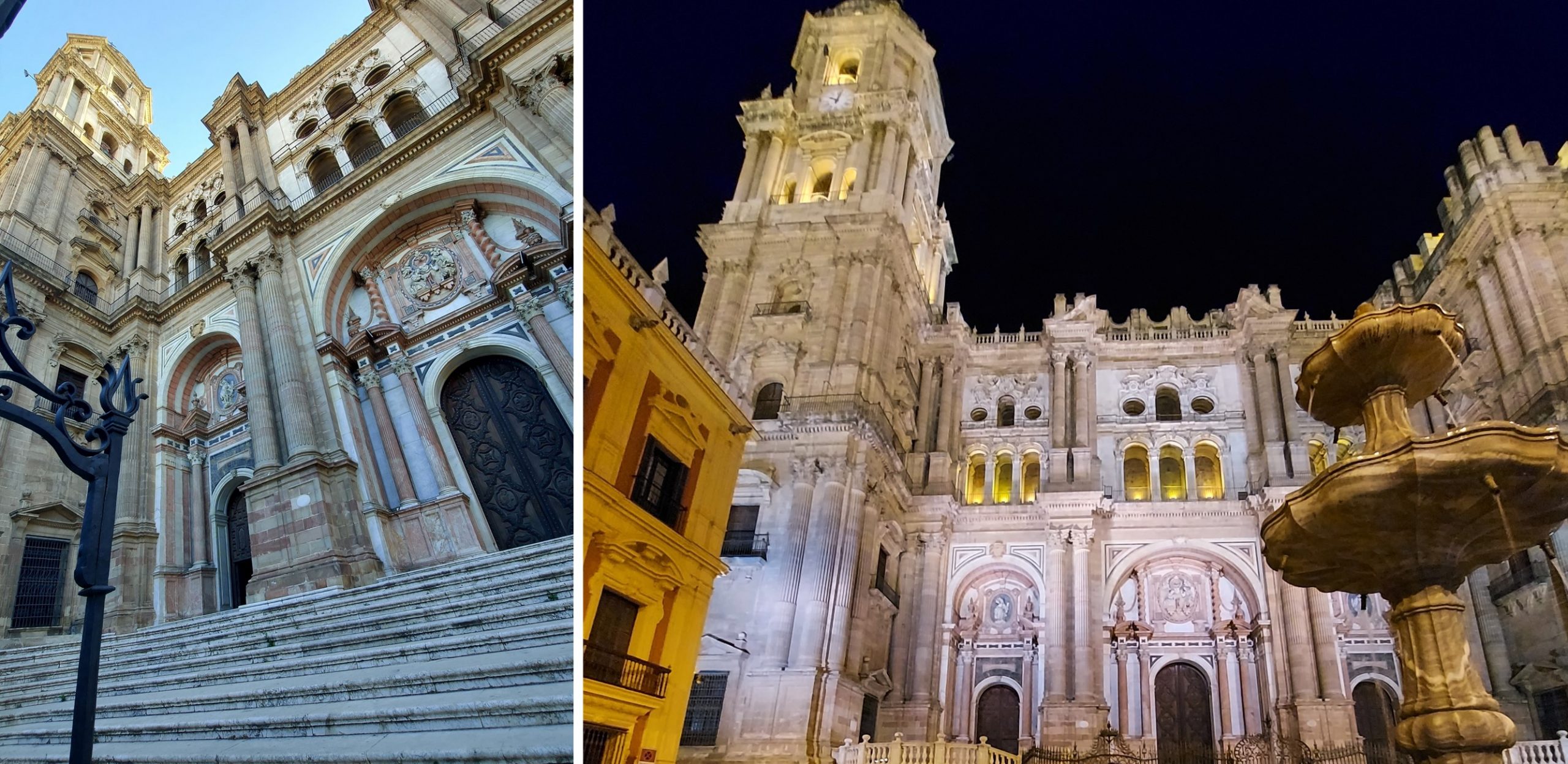
The central body of the façade is divided into two heights and three parts separated by monumental Corinthian columns built on high bases. On the lower floor there are three monumental arches and in them, reddish marble columns frame the doors.
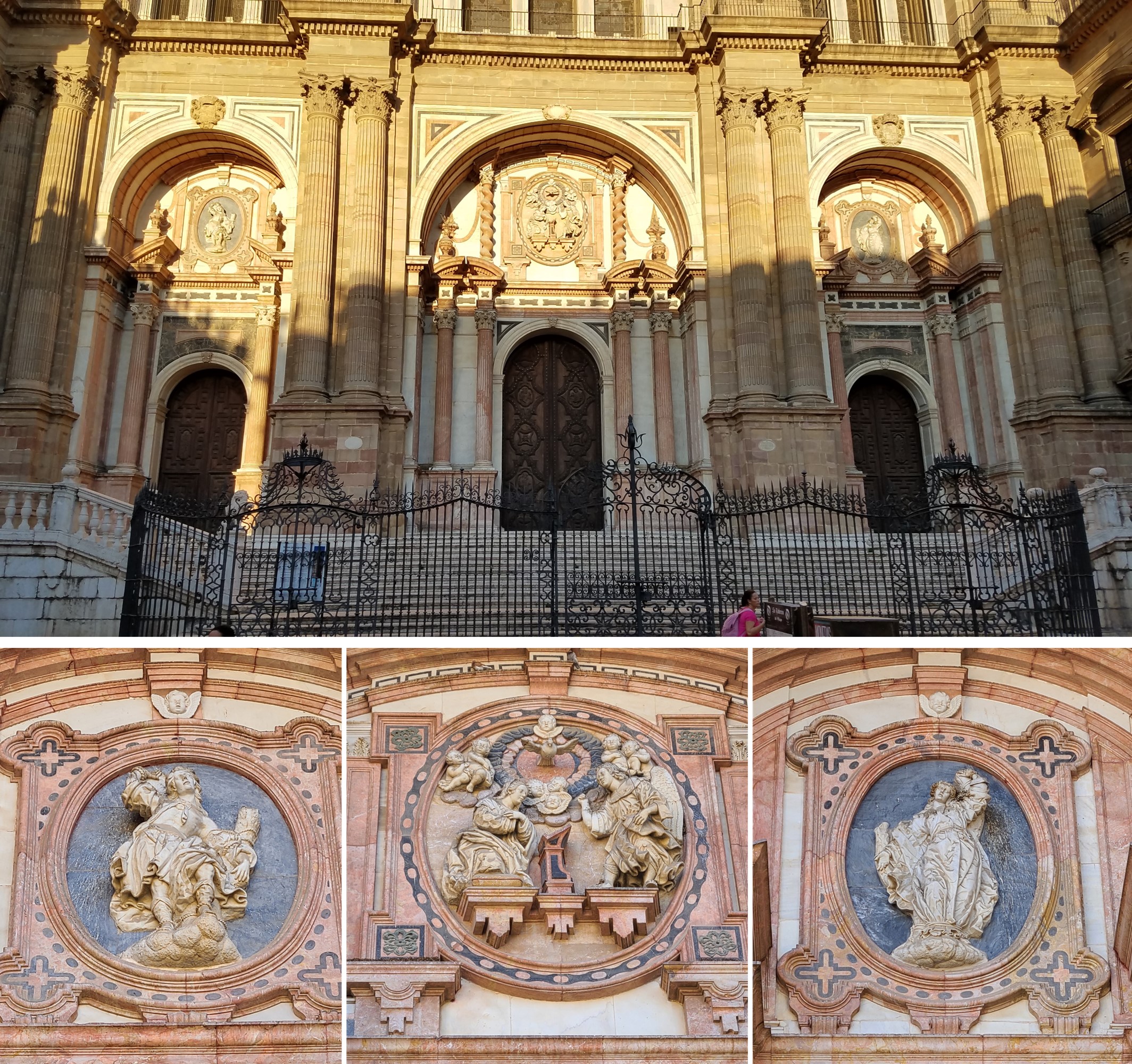
The main door is topped with Solomonic columns. Above the doors there are medallions. Those of the lateral doors represent the patron saints of Malaga, San Ciriaco and Santa Paula, while the central one represents the Annunciation of the Lord, a work carved in 1743 by the baroque sculptor Antonio Ramos.
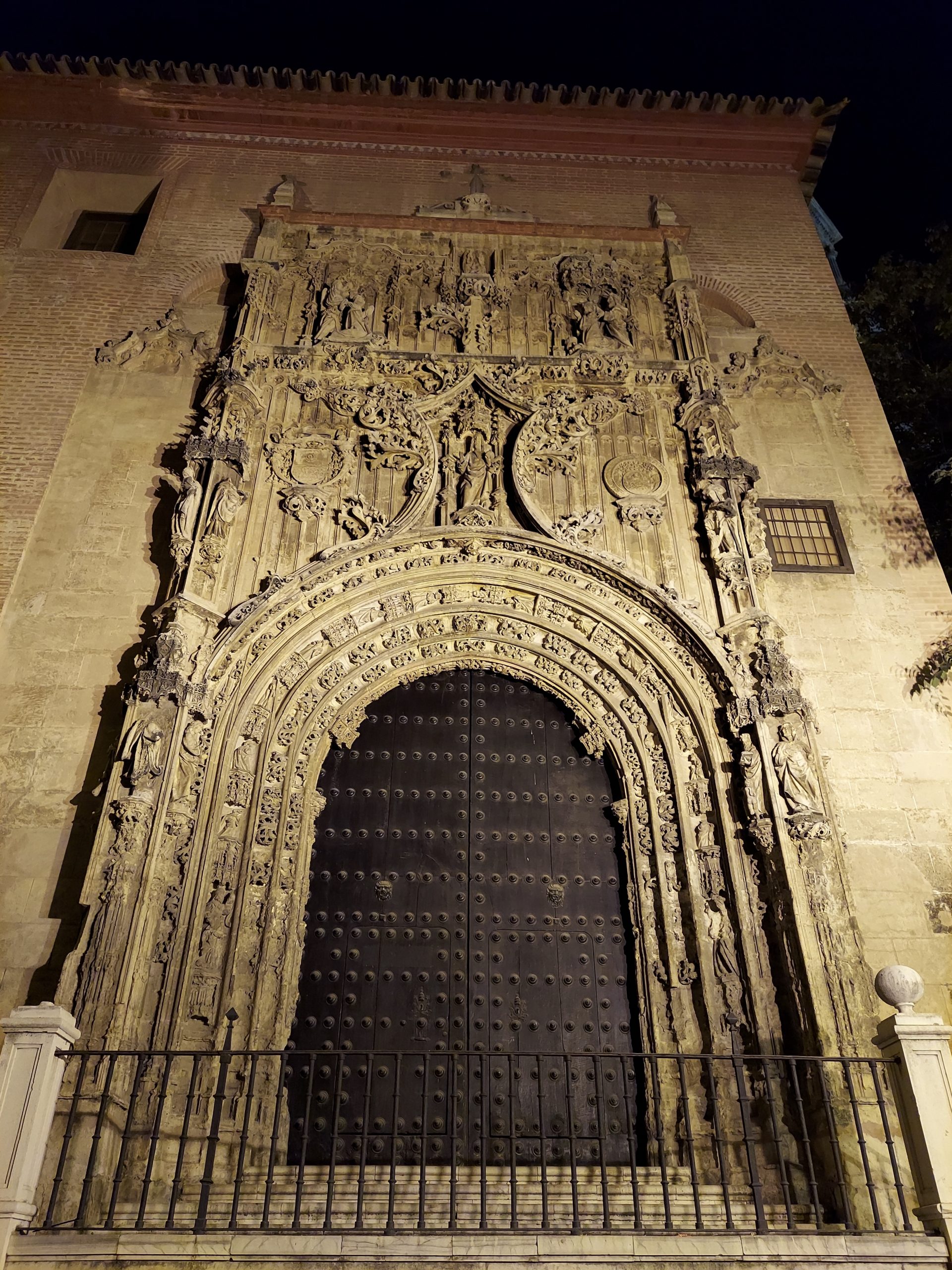
The only Gothic façade of the cathedral complex is located on the north side and belongs to the church of the Sagrario. It was ordered by Bishop Ramírez de Villaescusa at the beginning of the 16th century and stands out for its rich iconographic program.
The apse of the temple, belonging to the 16th century, is of great volume and although it lacks decoration, it has very beautiful stained glass windows that help the light to flow inside the building. In the lower part, we find the triple arches, while, in the upper part, we find simple arches accompanied by round windows.
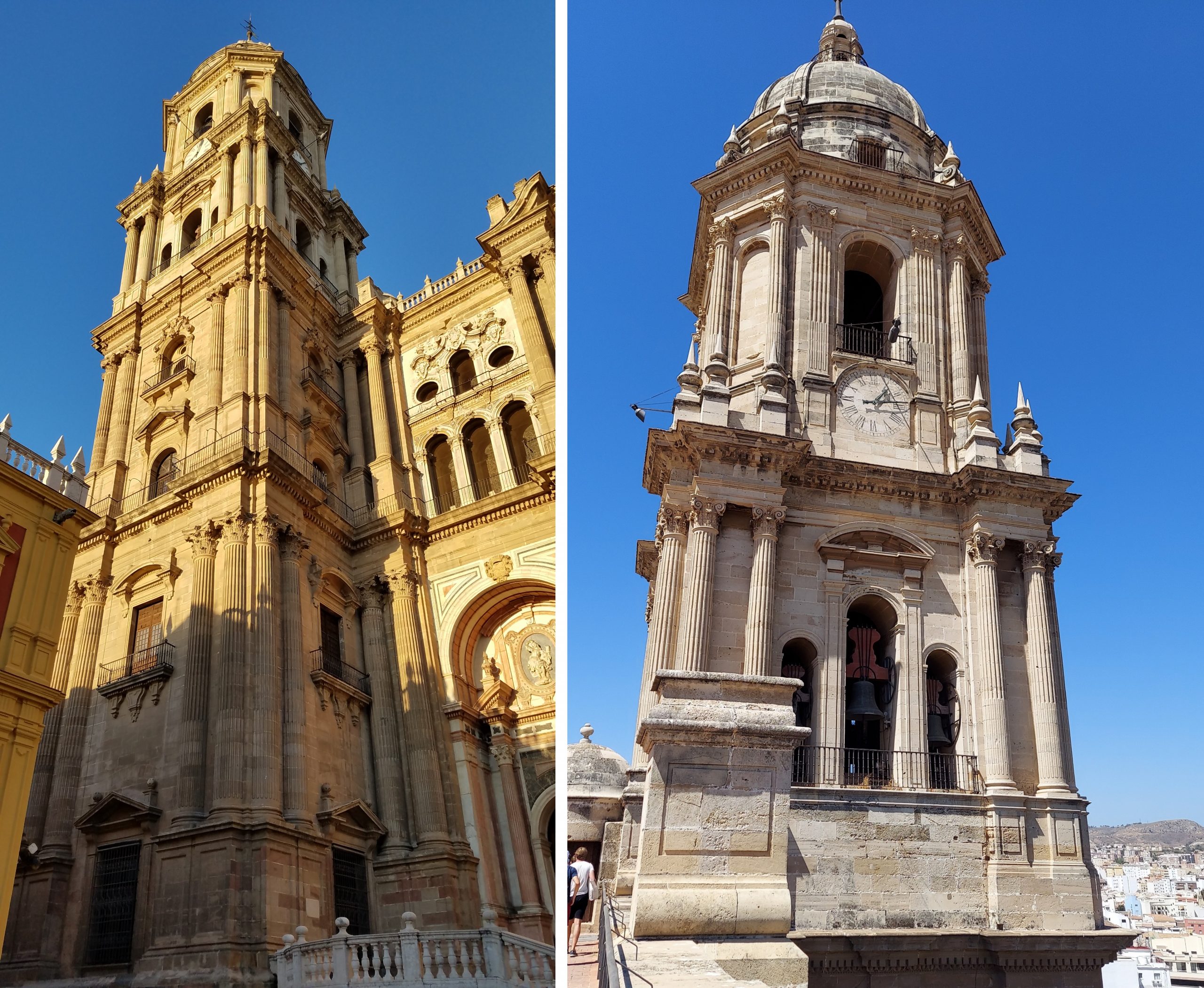
The north tower rises up to 84 meters high and 92 meters if we measure up to the harpoon, being the highest cathedral in Andalusia. Located to the left of the main façade, its first two bodies have the same proportions as the two heights of the central structure. On the other hand, the south tower is unfinished, topped by the shafts of its columns in the air.
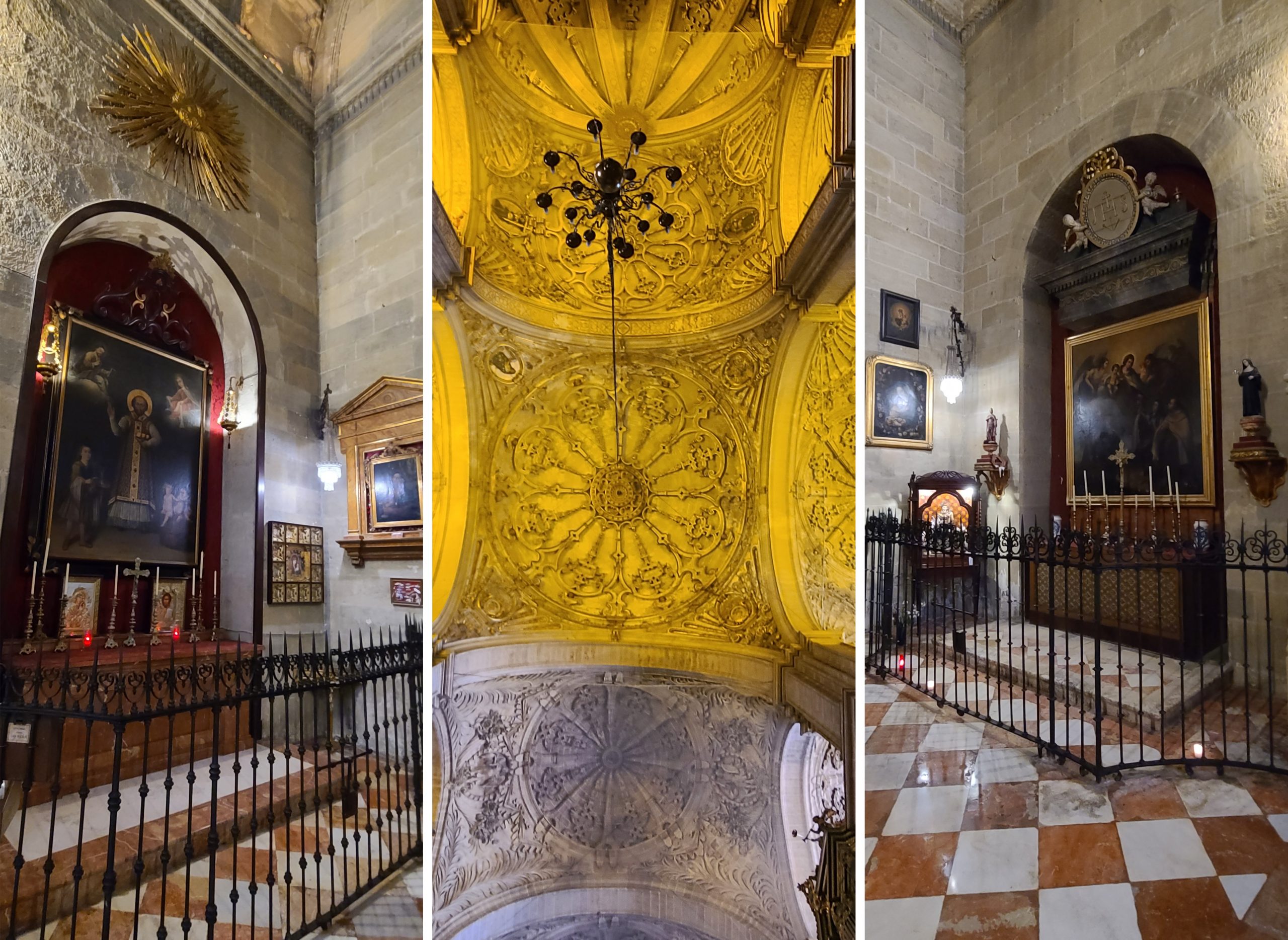
As for the shape of its plan, it is of Latin cross composed of three naves of equal height (41.79 meters), being the one in the center of greater width. It has a polygonal chevet with ambulatory. It has lateral chapels in all the perimeter of the church except for the feet, with a sensibly highlighted transept, ambulatory and polygonal apse.
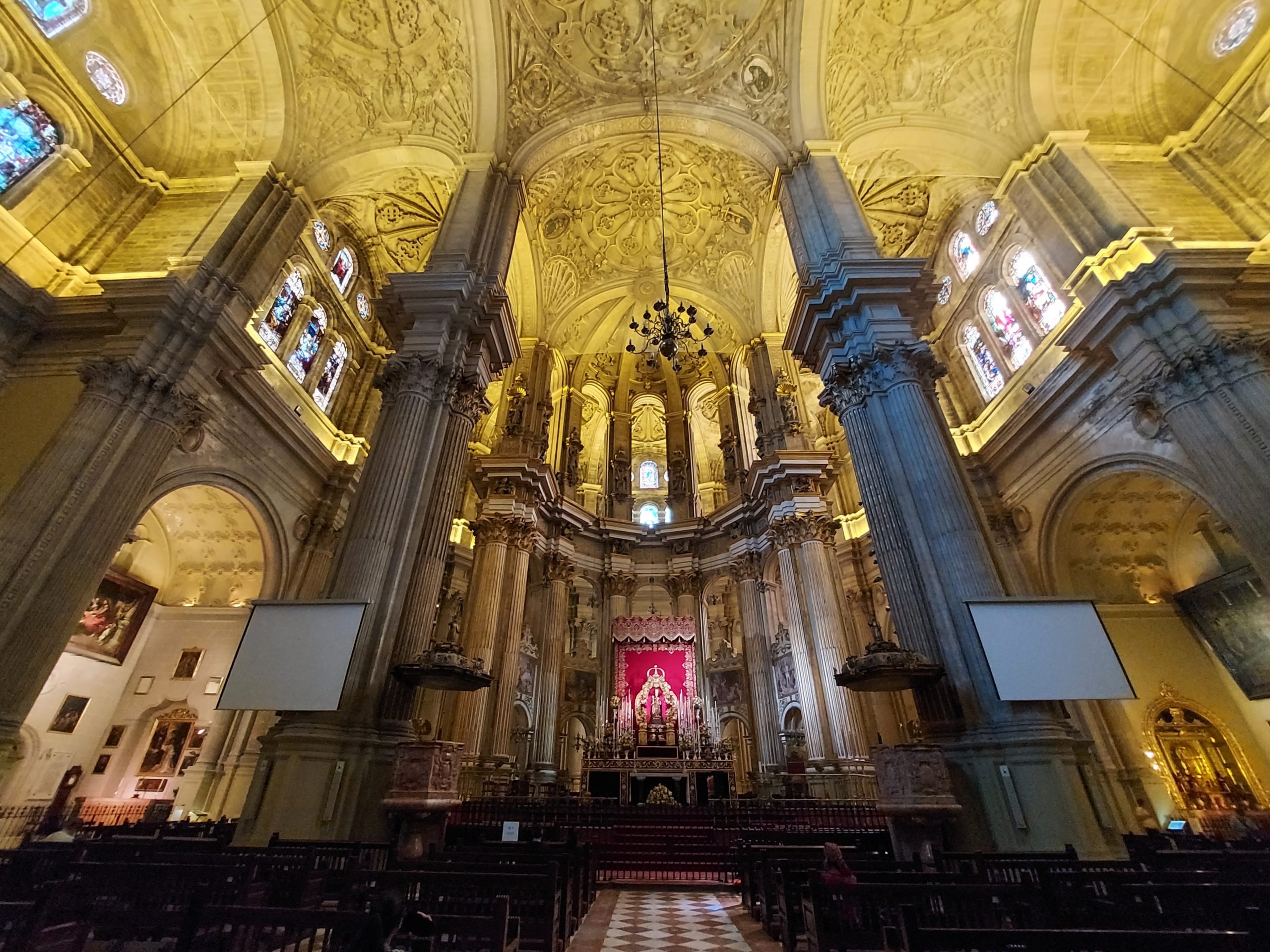
The High Altar, work of Diego de Vergara in 1541, is the main sacred space of the Cathedral of Malaga and is a real beauty. As far as its structure is concerned, it has a semicircular plan formed by six pillars joined at the top and supported by semicircular arches. Its walls have high windows between fluted Corinthian columns and covered with a beautiful ribbed vault.
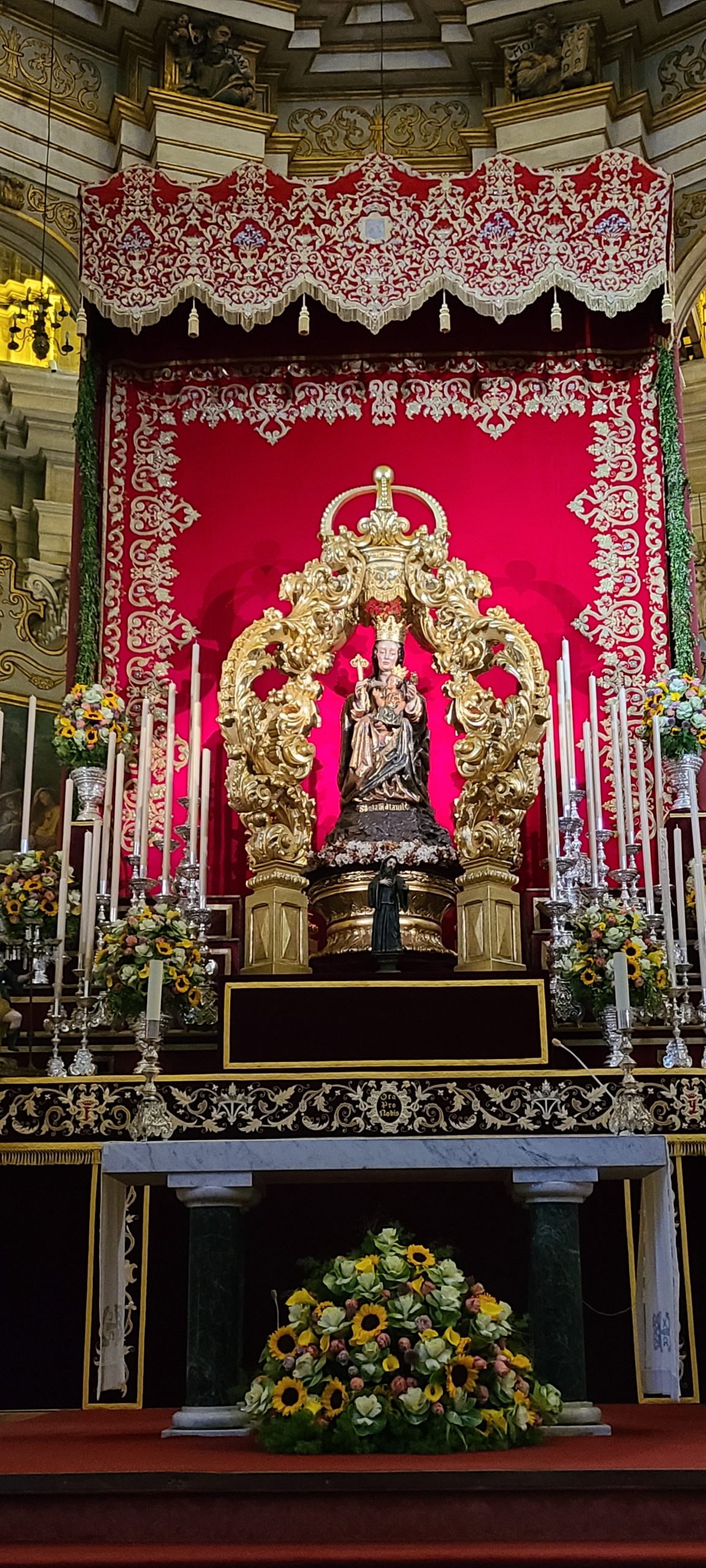
The tabernacle, located in the center, is surrounded by two levels richly decorated in gilding. On the lower level, around the tabernacle, there are paintings depicting scenes of the Passion of Christ; on the frieze, the busts of the Fathers of the Church and of the prophets and family background of Jesus Christ. On the upper level, there are the full body figures of a series of martyrs who shed their blood for Christ and who represent the triumphant church.
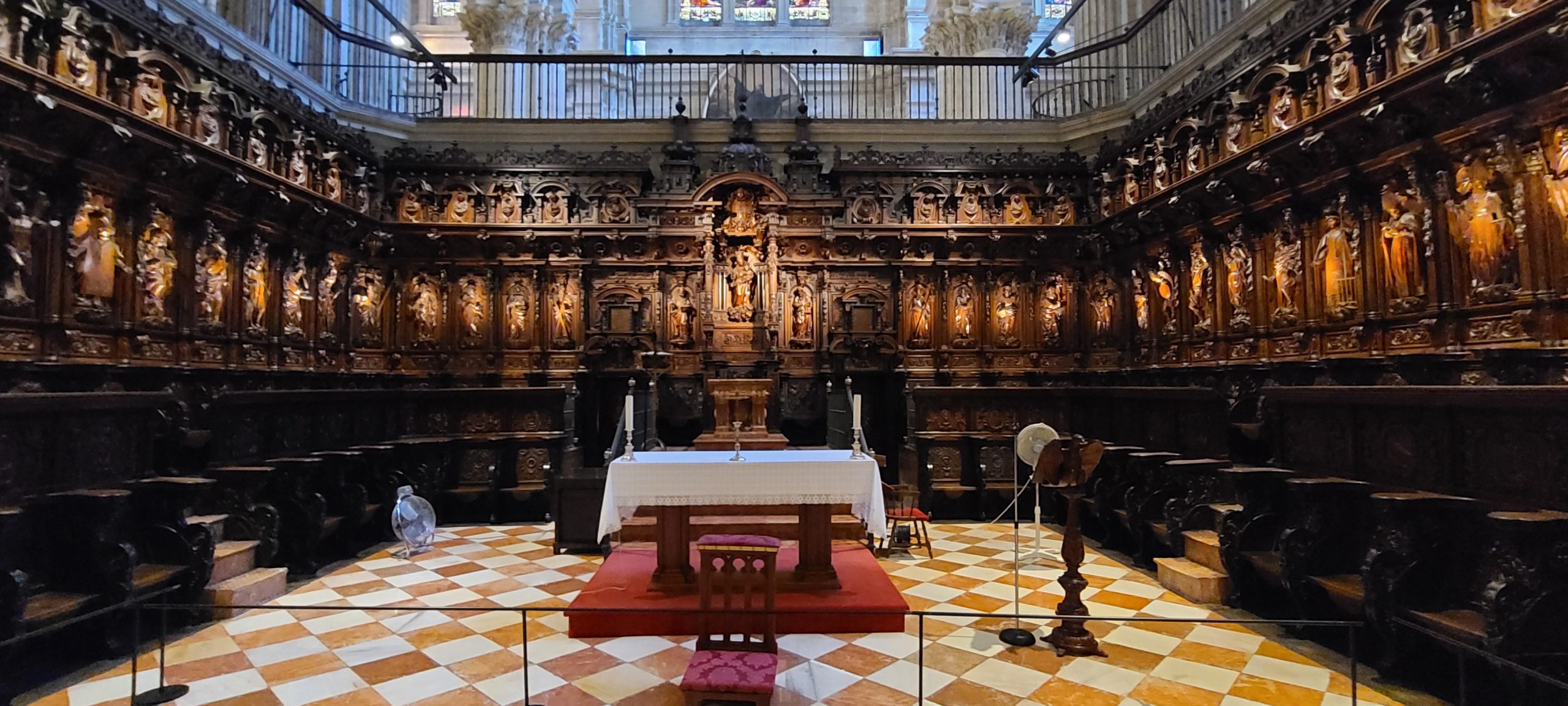
The Choir of the Cathedral of Malaga is one of the most outstanding sculptural ensembles of the Spanish Baroque of the 17th century. It is one of the most valuable rooms of the cathedral, a masterpiece of baroque carpentry and one of the most dazzling works of the sculptor Pedro de Mena.
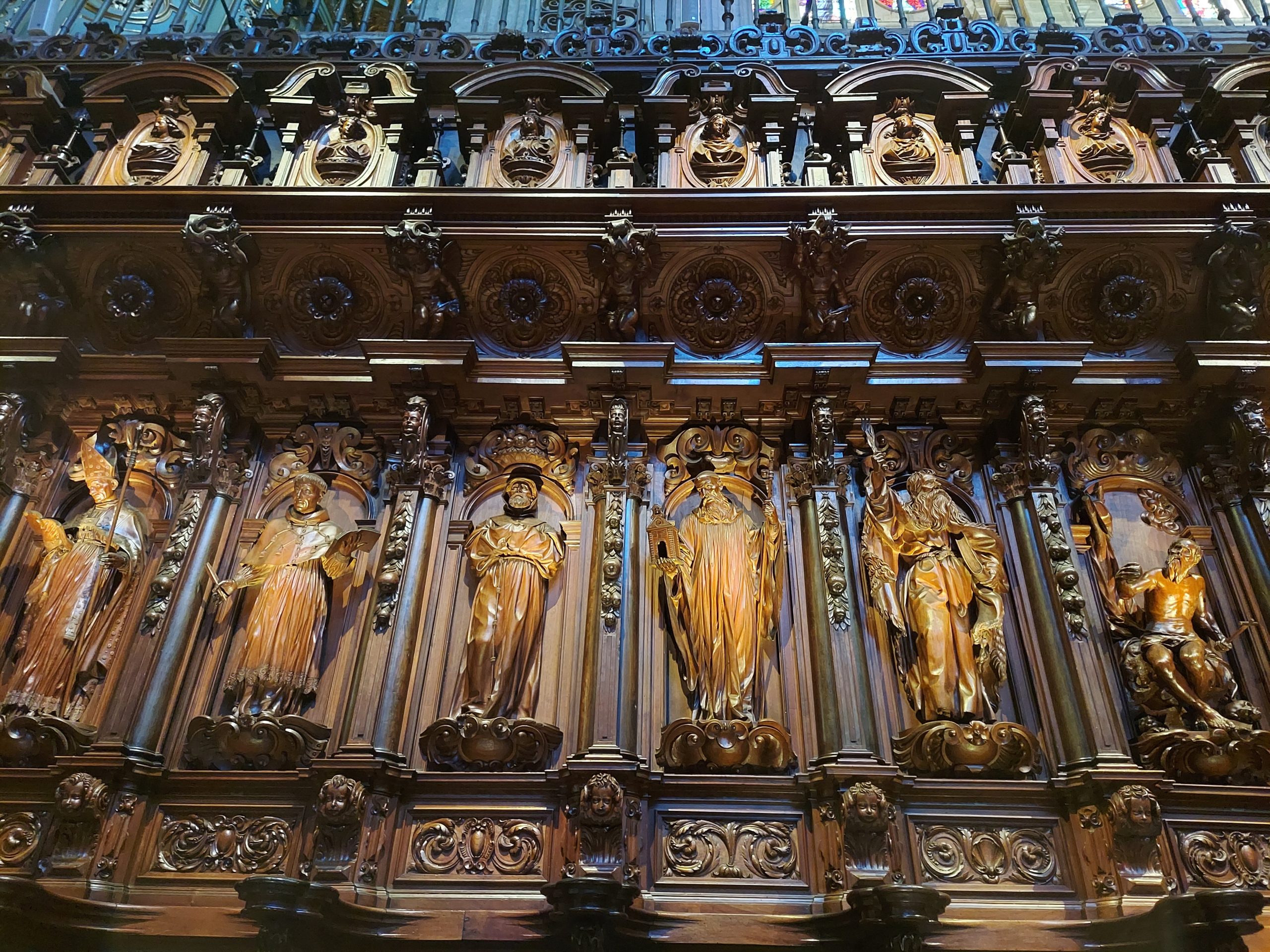
The choir stalls are carved on cedar, mahogany and American granadillo wood, forming a rectangular layout arranged in three levels: the first two have 44 seats and the last one takes the form of an attic.
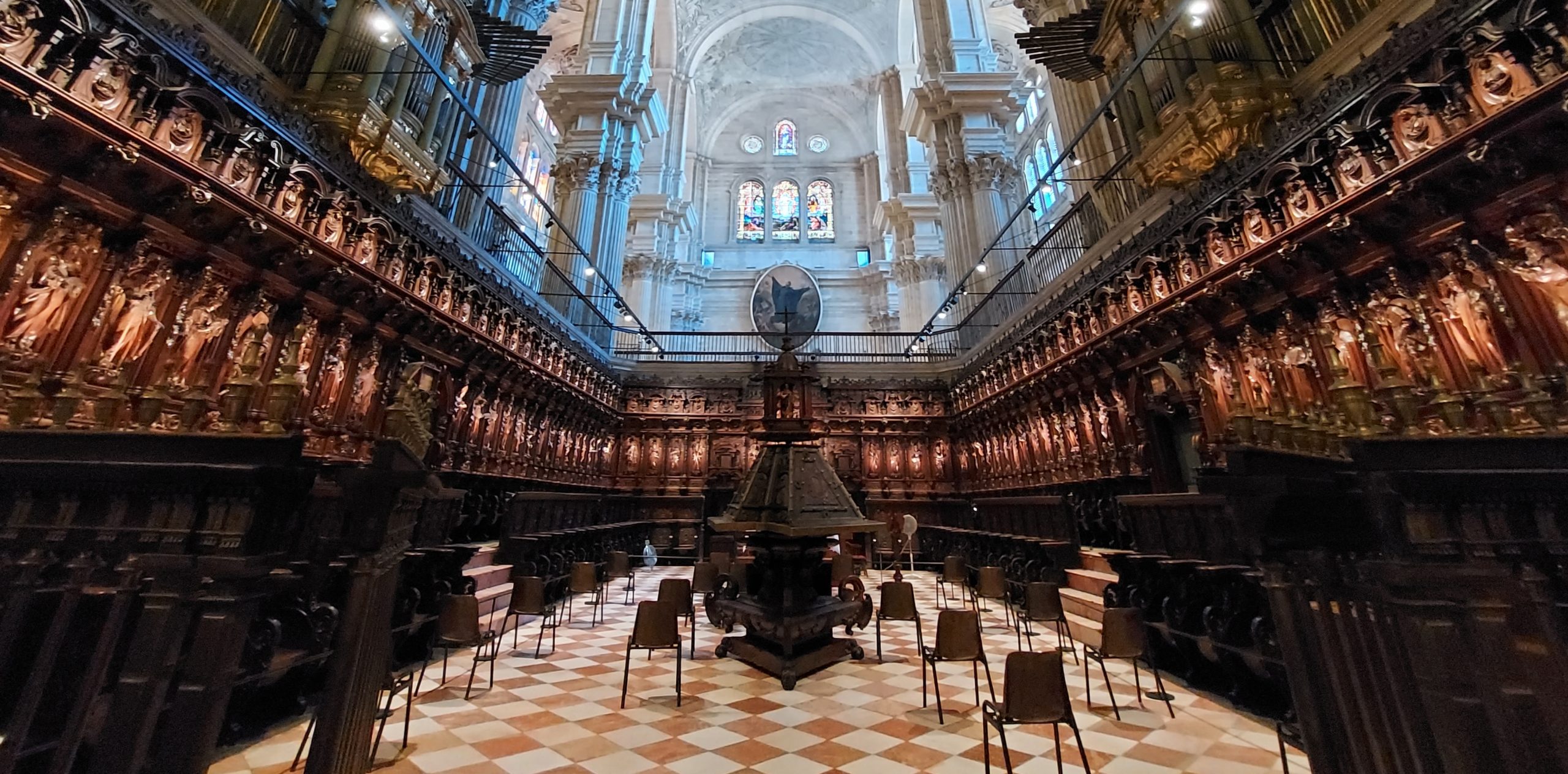
In the first body of the Choir it has a decorative carving with diverse geometric, vegetal, animal and allegorical motifs, as well as masculine and feminine heads. The second body presents as only difference the decorated backs in which are located the sculptures of the Virgin Mary Crowned surrounded by Apostles, Evangelists, Doctors of the Church and a wide range of Saints and founders of religious orders. The third and last body of the choir has a series of female heads framed by moldings and crowned with crests.
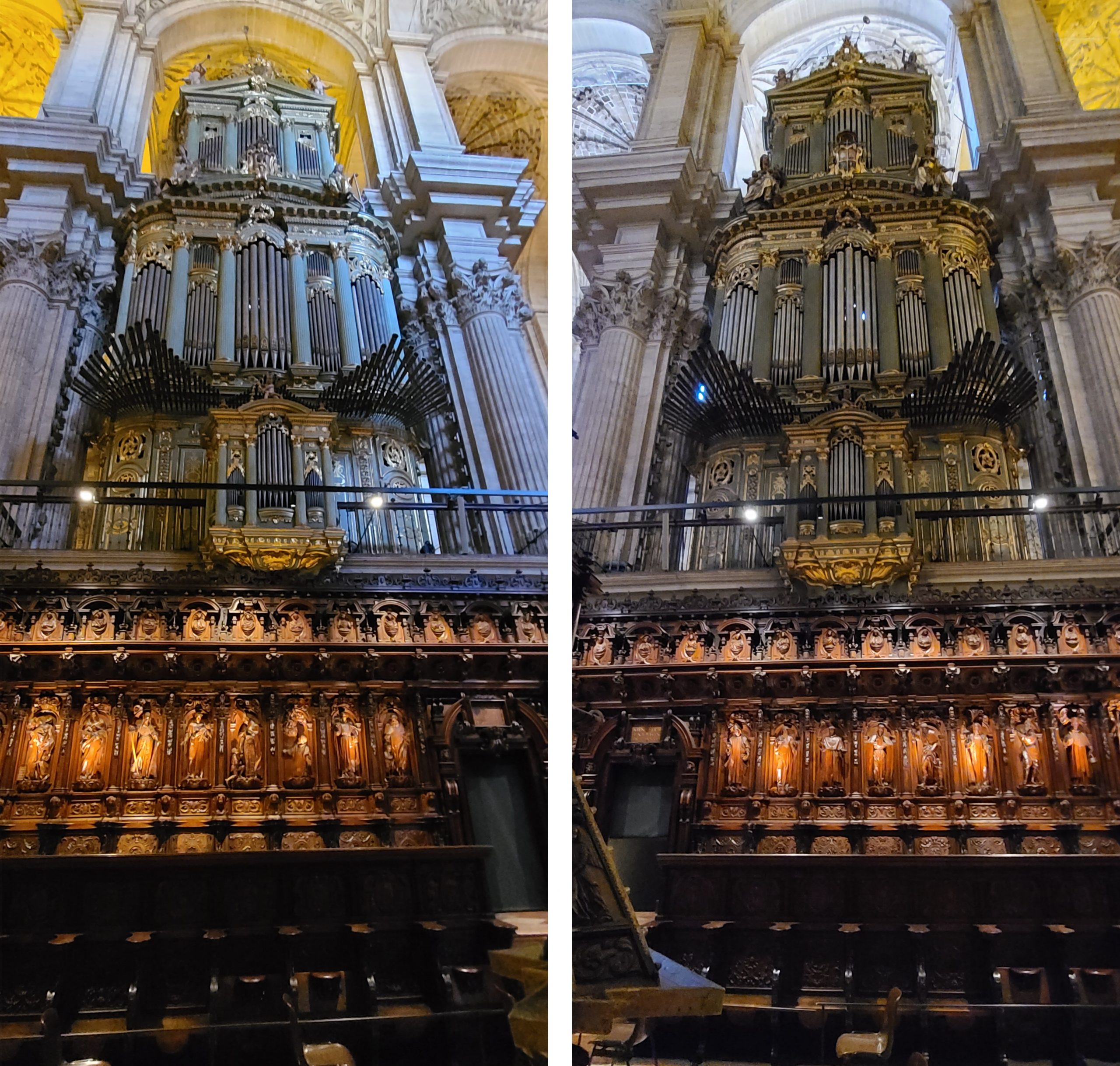
The two organs, which rise on the sides of the choir, with horizontal trumpeteria, are the work of Julián de la Orden, built between 1779 and 1781. The two organs are practically the same, except for the length of some of their pipes. They also differ in sound. They have more than four thousand magnificent pipes, which make it a great example of 18th century musical instruments that are still in good use today.
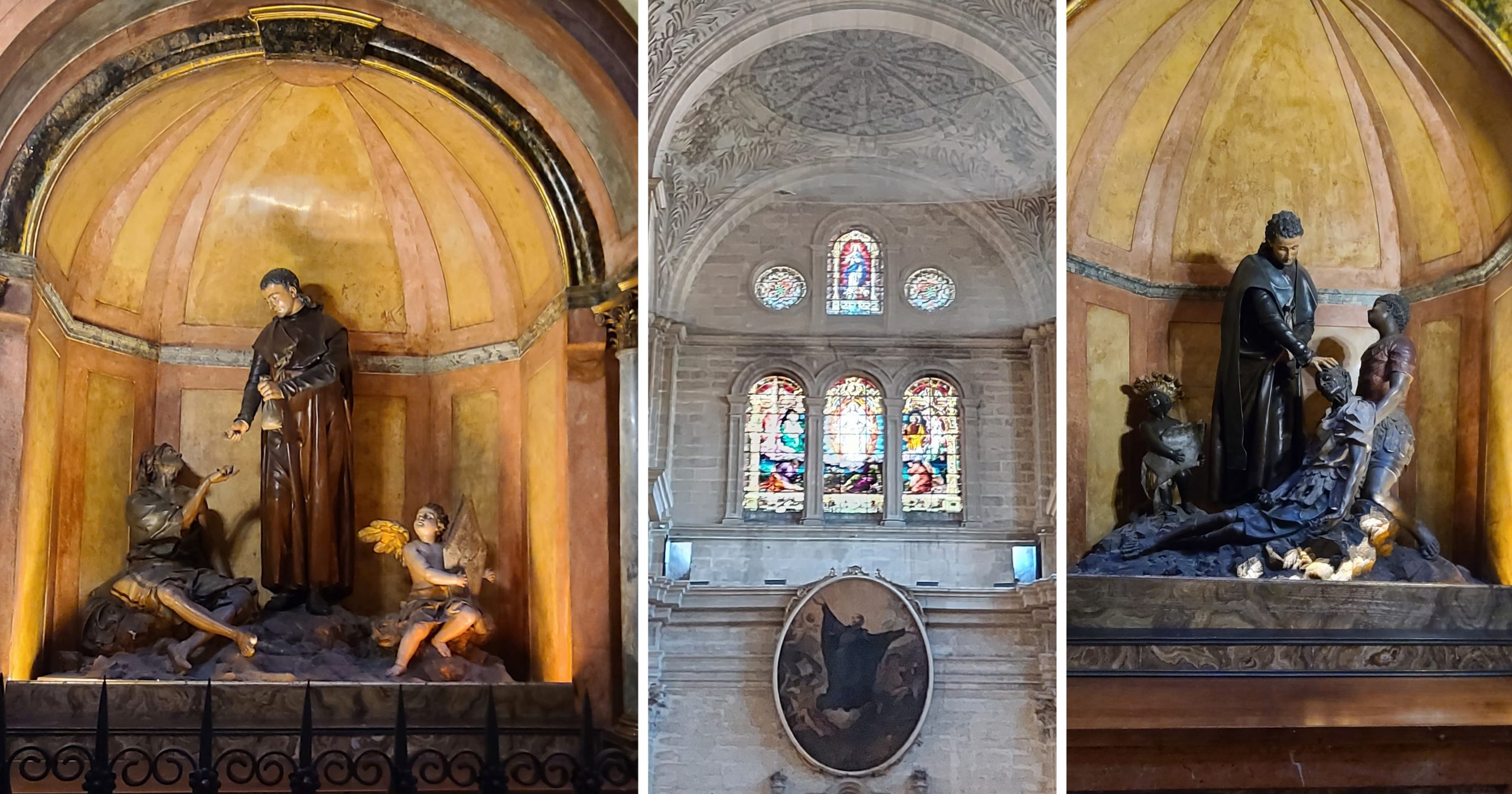
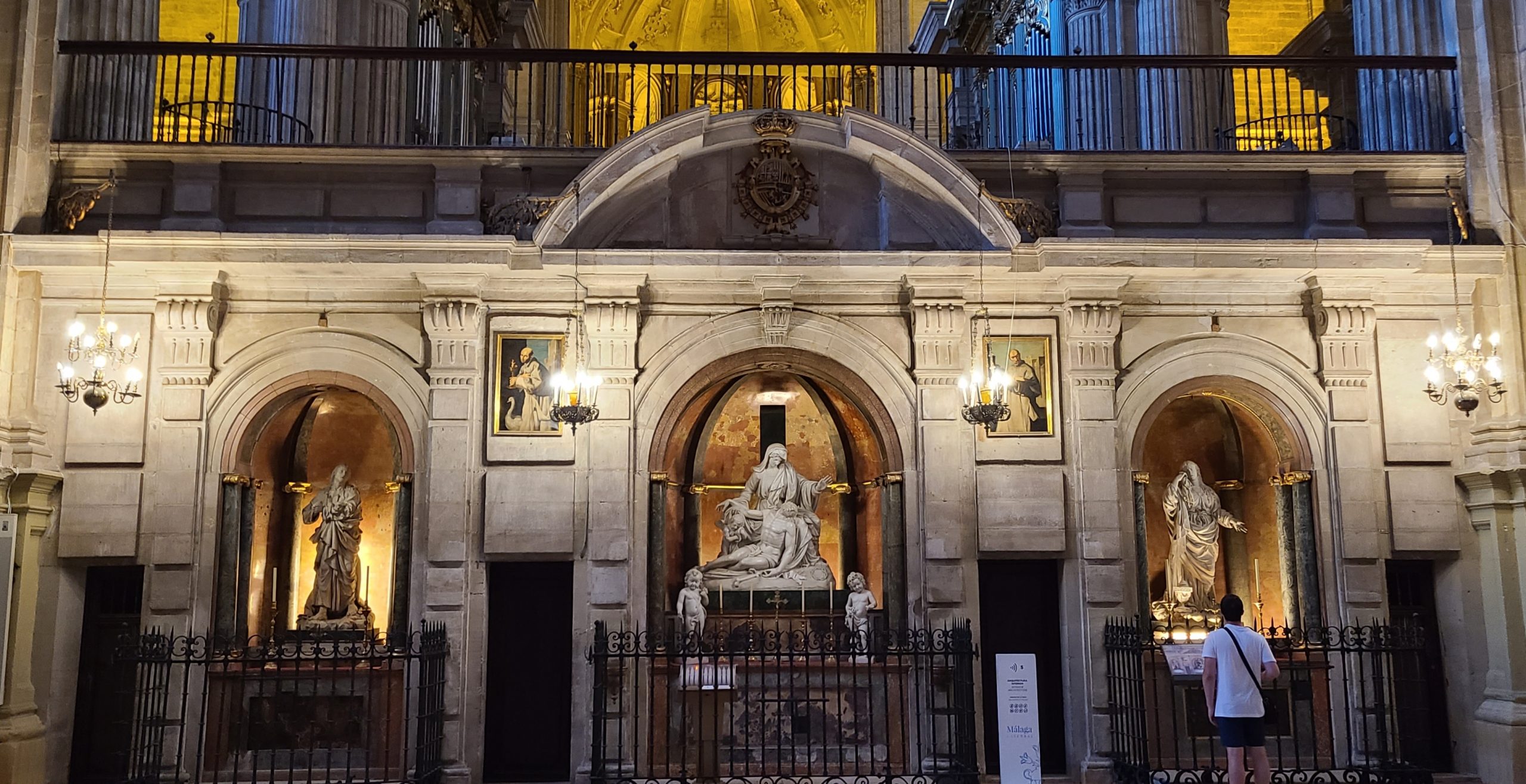
The choir is presided by an altar with a beautiful Pietà sculpted in marble by the Pissanis brothers. In the lateral niches are venerated the carvings of St. John and Mary Magdalene, made like the images of the side chapels by the 19th century Malaga sculptor Salvador Gutiérrez de León.
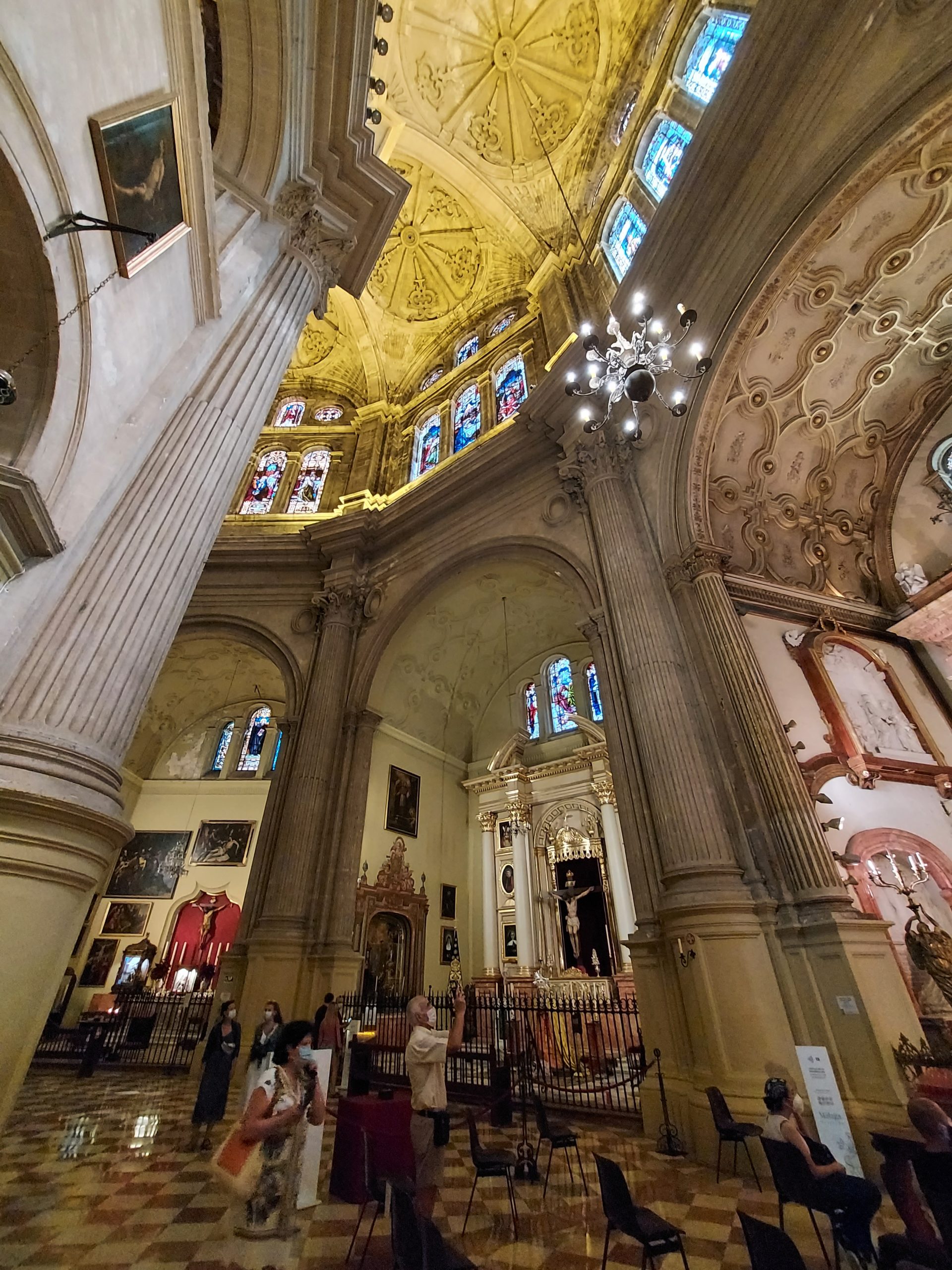
The Cathedral of Malaga has a total of fourteen chapels that in turn are divided between: Chapels Nave of the Gospel, Chapels Nave of the Epistle and Chapels of the Cross.
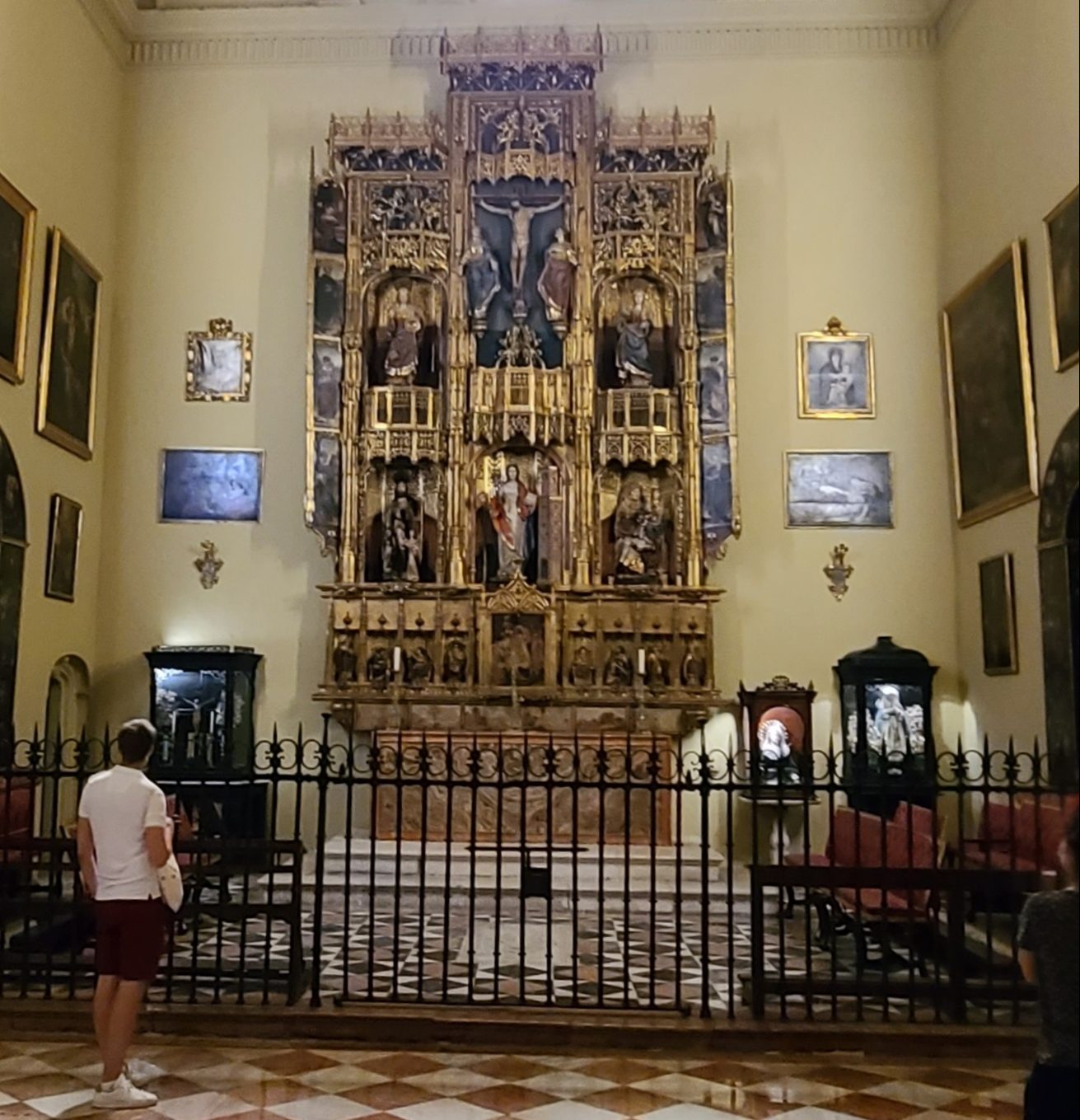
In the interior of the Cathedral of Malaga a series of works of art of great value are observed, among them are the Gothic altarpiece of the Chapel of Santa Barbara, the only one that comes from the primitive mosque-cathedral. It is a Gothic style ensemble commissioned in 1524 to the sculptor Nicolás Tiller and the painter Francisco de Ledesma. The walling of this chapel during the Spanish Civil War contributed to the conservation of the altarpiece.
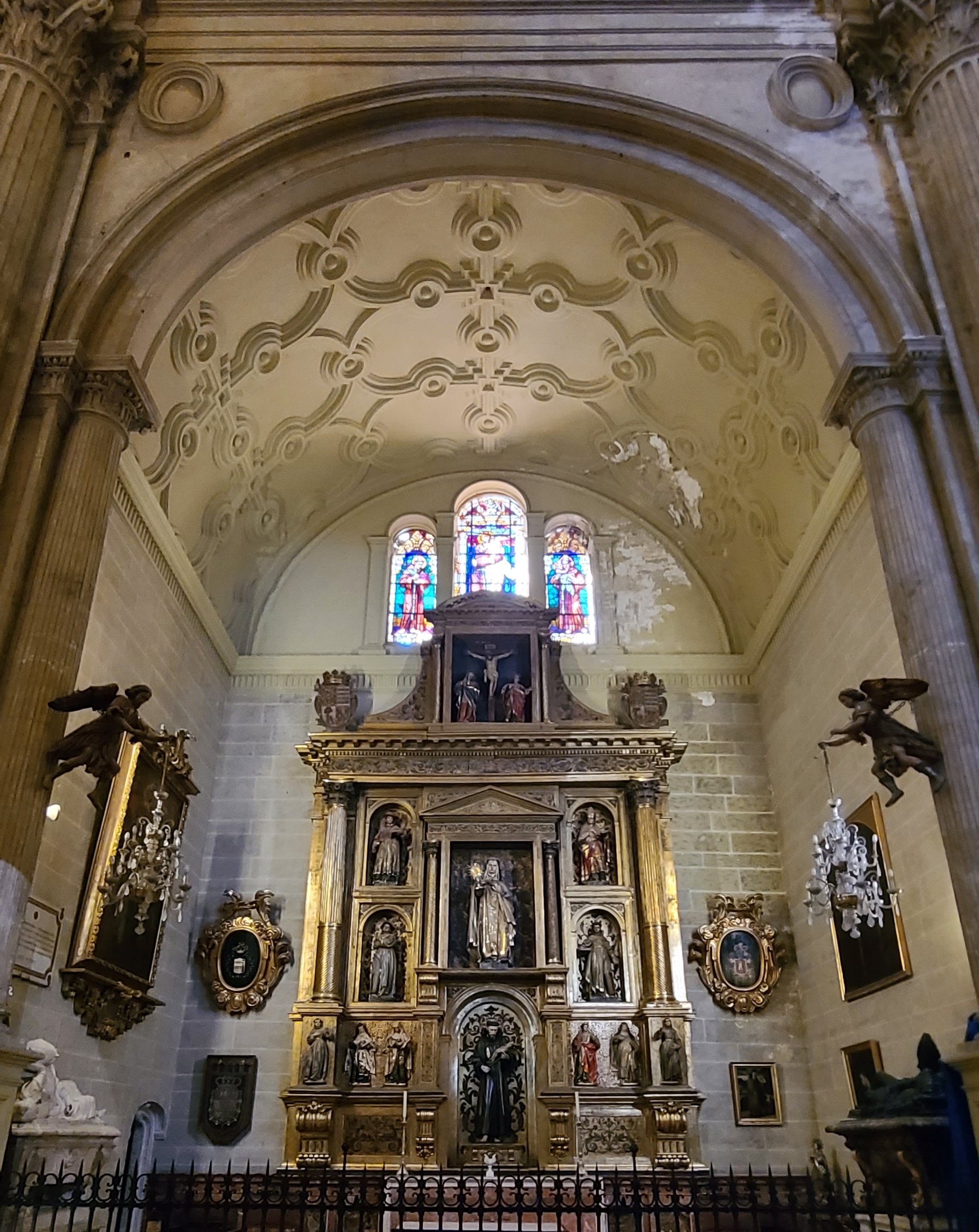
In the Chapel of San Francisco the altarpiece of Castilian style, of the first baroque period of the XVII century stands out. It is composed by a presentation that describes and represents the saints and saints of the Franciscan order. It is about the first Franciscan order that was established in the city of Malaga. In addition, there are the sepulchres of the XVI century.
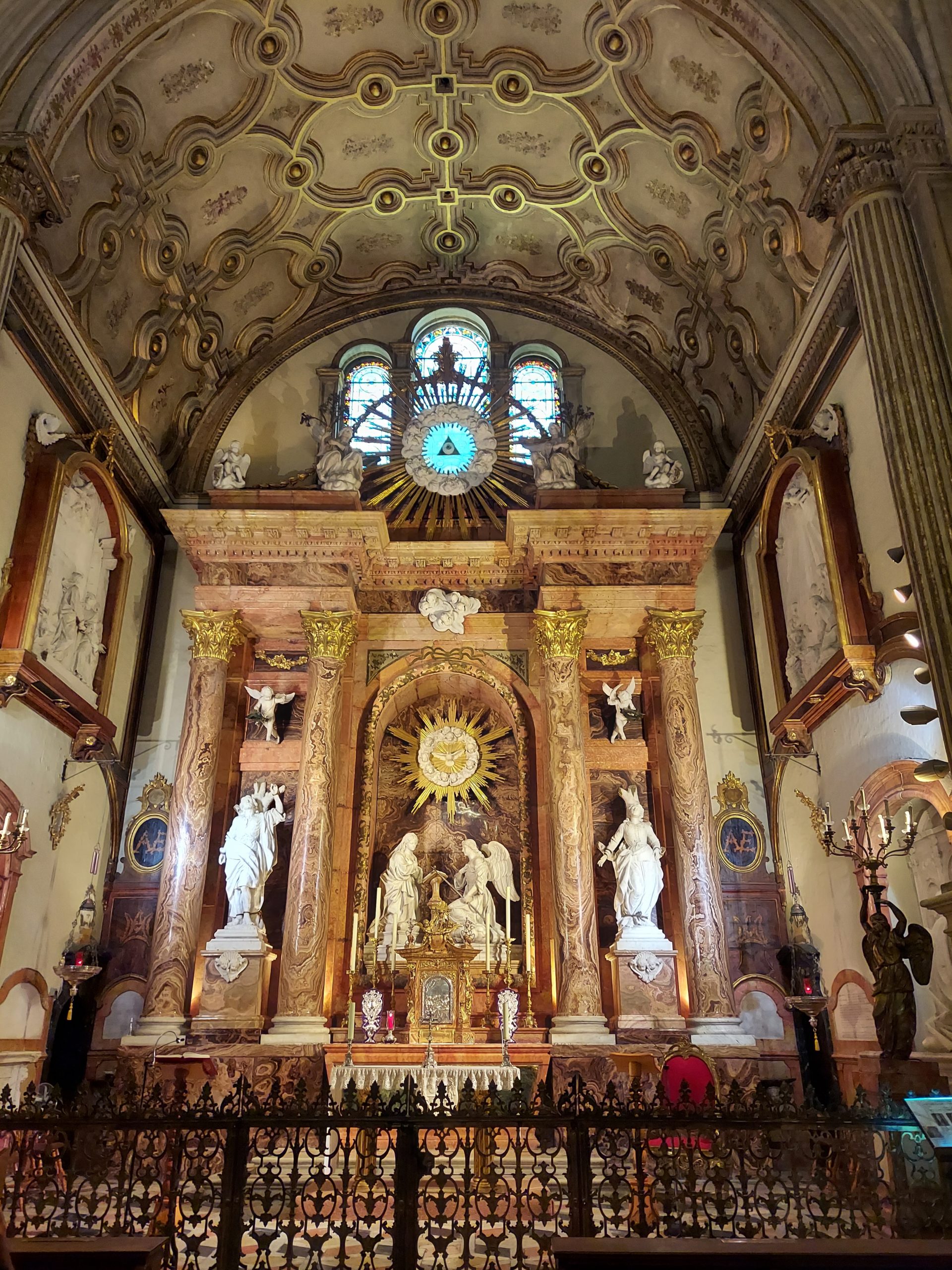
The origin of the Chapel of the Incarnation is in the bishop Fray Bernardo Manrique, main promoter of the works of the Cathedral in the XVI century, who reserved this space for his burial. The style of the altarpiece is classical and the mausoleum on its left side belongs to the first bishop who was in charge of the composition of the chapel, Fray Bernardo Manrique. It is the only original piece that remains from the original chapel.

In the cathedral is the Cathedral Museum, currently located in the area of the old Chapter House, has a beautiful coffered ceiling of the nineteenth century, with works of the Cathedral itself and other places.
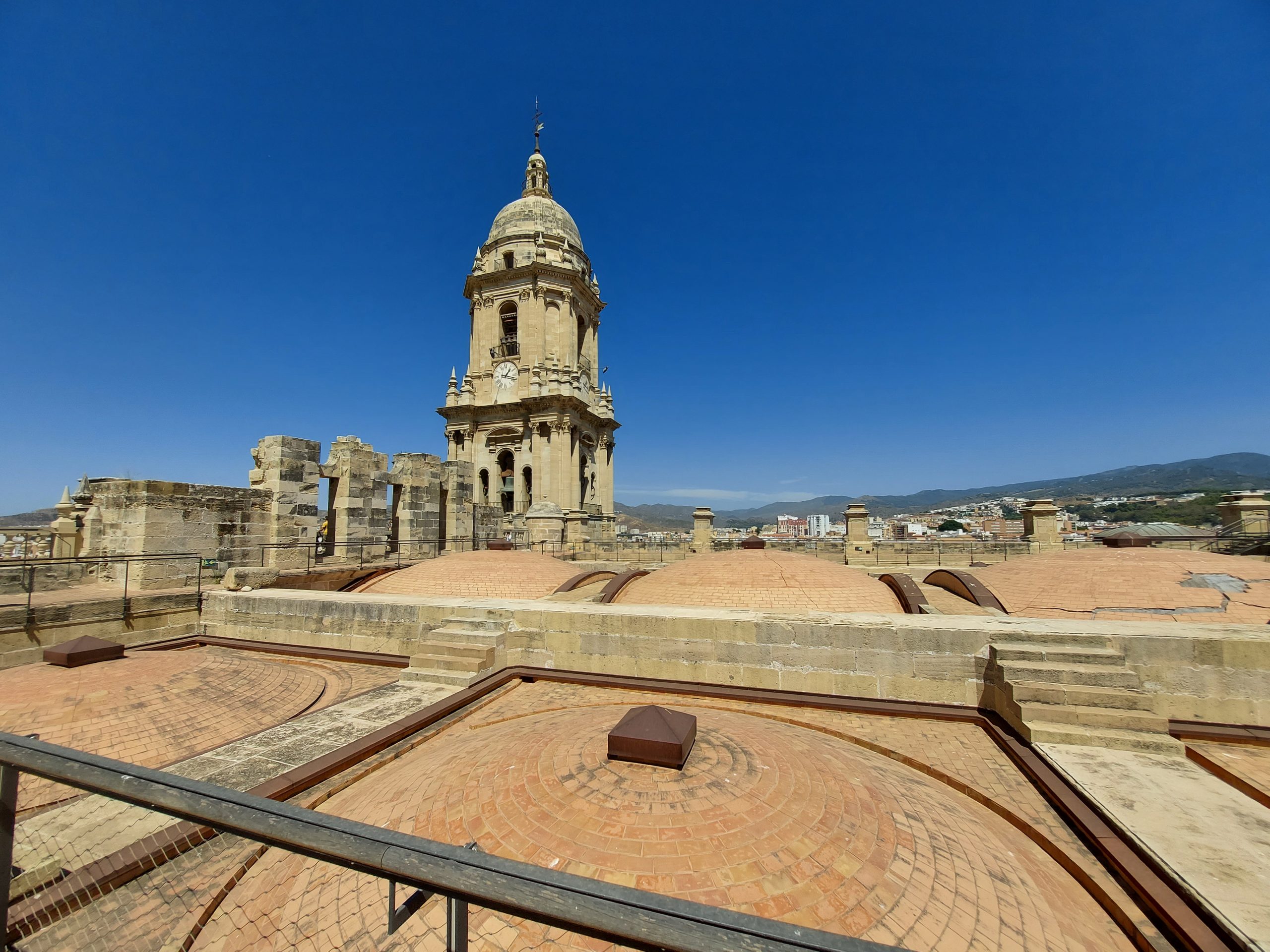
After a process of adaptation and construction of walkways, on May 12, 2015, access to the Cathedral’s decks was opened to the public. It is a guided tour of approximately one hour, being able to enjoy upstairs about 30 minutes. From the decks of the Cathedral of Malaga you can enjoy a beautiful panoramic view of the city that includes the Alcazaba, the Gibralfaro and the roof and tower of the monument. As we always say, even with the challenge of the number of steps to climb, the experience and the views are well worth it. For the same reason, we share the short video we took from the decks of the Cathedral of Malaga.
Resources:
• https://es.wikipedia.org/wiki/Catedral_de_M%C3%A1laga
• http://www.malagaturismo.com/es/recursos-turisticos/detalle/catedral-de-nuestra-senora-de-la-encarnacion/132
• https://malagacatedral.com/la-catedral/historia/
• https://www.malaga.es/es/turismo/patrimonio/lis_cd-3808/catedral-de-malaga-o-de-la-encarnacion
